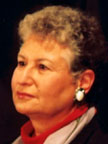|

Who
Will Run Our Schools?
By
JILL LEVY
Once
again, we are engaged in a debate over control and accountability
of New York City’s public schools. Even State Assembly Speak Sheldon
Silver has joined the fray by appointing a task force to make
recommendations for the governance of our city public schools.
As we tackle this important issue, we must remain focused on the
real challenge before us: developing and sustaining the finest
public education system for our children.
Since public education began in New York City in 1805, our children
have experienced private and public oversight, appointed borough
boards, elected district boards, advisory boards and central boards,
boards appointed solely by the mayor, and boards appointed in
part by the mayor and the borough presidents. What they haven’t
had is a public school system that is fiscally and governmentally
independent.
Unlike suburban and rural school districts across the state, New
York City’s public school system is one of five that operates
under a different set of rules. At it’s best it is a quasi-independent
board that is responsible only to the people who appointed its
members - the borough presidents and the mayor. Even then, because
of the budget process, the power ultimately rests with the Mayor.
Thinking outside of the box, perhaps we should focus on what differentiates
New York City from its suburban and rural counterparts? Perhaps,
we should be considering the possibility of legislation that would
make NYC more like its neighbors—giving it an independently elected
school board. Such a new governance could include an elected,
full-time school board representing the taxpayers in each borough
with two members at large elected by all the taxpayers. In addition,
one mayoral and one city council appointee would round out the
board.
In addition to governance changes, funding issues should also
be considered. Currently, education funds, regardless if they
are local, state, or federal are deposited directly into city
coffers. Wouldn’t there be more accountability if a school board
representing the interests of parents and taxpayers knew that
there was a consistent source of city income earmarked for education,
instead of relying on the Mayor’s funding decisions?
Regardless of the type of governance, current literature tells
us that reform efforts take place at the local level. Such reforms
include:
Greater autonomy at the school level: principals working with
parents and teachers need to have the authority and freedom to
determine how their schools should be run. Clearly stated, rigorous
academic standards. Everyone needs to understand where a school
is, where it should be and the goals it has set to get there.
Mayoral control, expanded boards of education, borough boards
or no boards are all ways of tinkering around the edges of school
reform. But, real reform and achievement rest with principals
and teachers who are appropriately supported to get the job done.
Urban school systems must pay competitive salaries to principals
and teachers if they are to insist upon hiring and retraining
the best. Achievement and accountability happen in the classroom,
not the school board room.
Jill
Levy is the President of the Council of Supervisors and Administrators
which represents the principals, assistant principals, supervisors,
and administrators in NYC public schools and day care directors.
Education Update, Inc., P.O. Box 20005, New York, NY 10001. Tel:
(212) 481-5519. Fax: (212) 481-3919. Email: ednews1@aol.com.
All material is copyrighted and may not be printed without express consent of
the publisher. © 2001.
|

